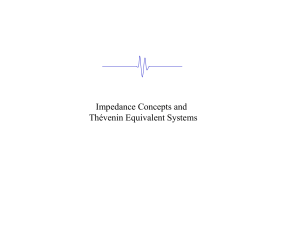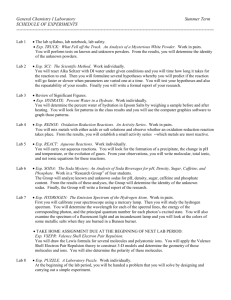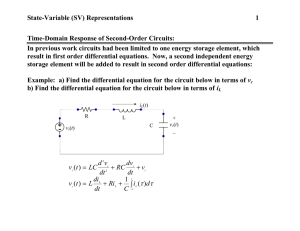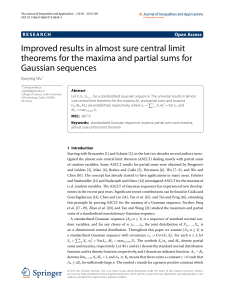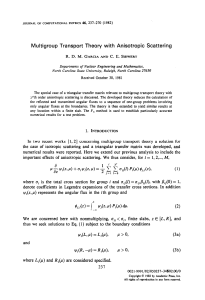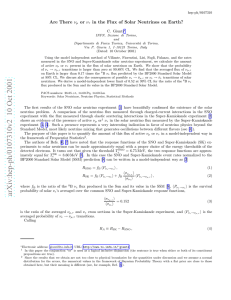ECE3300 REVIEW OF COMPLEX NUMBERS AND PHASORS
advertisement
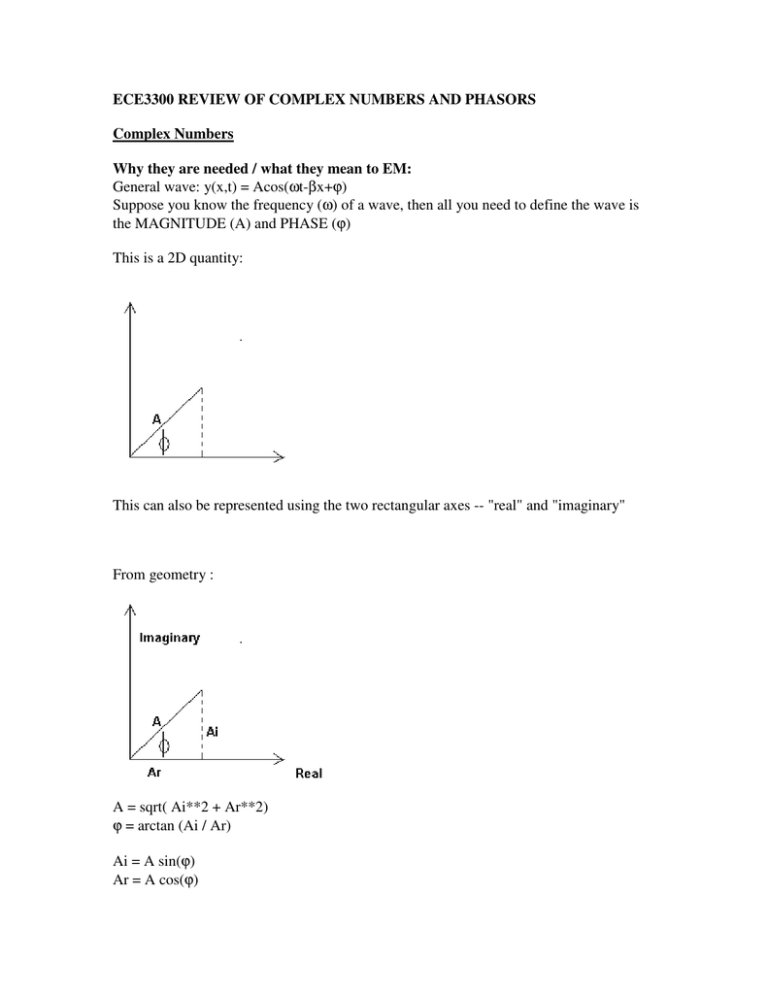
ECE3300 REVIEW OF COMPLEX NUMBERS AND PHASORS Complex Numbers Why they are needed / what they mean to EM: General wave: y(x,t) = Acos(ωt-βx+ϕ) Suppose you know the frequency (ω) of a wave, then all you need to define the wave is the MAGNITUDE (A) and PHASE (ϕ) This is a 2D quantity: This can also be represented using the two rectangular axes -- "real" and "imaginary" From geometry : A = sqrt( Ai**2 + Ar**2) ϕ = arctan (Ai / Ar) Ai = A sin(ϕ) Ar = A cos(ϕ) Two ways of writing this number (complex #): Polar form: Z = A ∠ϕ = A exp(jϕ) J = sqrt(-1) Rectangular Form: Z = Real(z) + j Imag(Z) = Ar + j Ai Mathematics of Complex Numbers: Z1 = Ar1 + j Ai1 =A1 exp(jϕ1) Z2 = Ar2 + j Ai2=A2 exp(jϕ2) Addition: Z1 + Z2 = ( Ar1 + Ar2 ) + j (Ai1+ Ai2) Multiplication: Z1 Z2 = A1 exp(jϕ1) A2 exp(jϕ2) = A1 A2 exp(j ( ϕ1+ϕ2 ) ) Division: (A2 ≠ 0) Z1 / Z2 = A1 exp(jϕ1) / A2 exp(jϕ2) = A1 / A2 exp(j ( ϕ1-ϕ2 ) ) Exponentiation Z1n =( A1 exp(jϕ1) ) n = A1 exp(j n ϕ1) Useful Facts: -1 = "180 degree phase shift" = 1∠180 = j2 = ejπ = e-jπ j = "90 degree phase shft" = 1∠90 = ejπ/2 -j = "-90 degree phase shift" = 1∠-90 = e-jπ/2 (show what this means on phasor plots) **COMPLEX NUMBERS HAVE PHYSICAL MEANING HP Calculators: FAIR GAME! BUT be SURE you understand the physics before you do the numbers. Phasors: Phasor technique is used to simplify solution of ANY linear system with sinusoidal forcing function. Εxample: Series R-L. Find I(t) vs(t) = R I(t) + L di(t)/dt 1. Define a reference (phase reference) point V(t) = Acos(ωt+φo) Define φoas reference Example: 1GHz source V(t) = 1.0 cos(2π(1GHz)t +0) V/m V(t) is the INSTANTANEOUS value 2. Express time-dependent variables as phasors V(t) = real(V ejωt) where V(t) = 1.0 e (j 0)) V/m Notes: italic used in place of tilde phasor sign in these notes; EEs use ejωt and physics uses e-jωt 3. Integration and differentiation can also be replaced by phasor notation: ∂ ejωt / ∂ t = jω ejωt ∫ ejωt = ejωt / jω Εxample: Series R-L Vs(t) = R I(t) + L di(t)/dt V = RI + jωLI 4. Solve (for I) I = V / (R + jωL) = V (R-jωL) / (R + jωL) (R-jωL) = V (R-jωL) / (R2 + (ωL)2) = [VR / (R2 + (ωL)2) ] - j [ωL / (R2 + (ωL)2)] = Real + j Imag ! |I| = sqrt( Real**2 + Imag**2) ∠I = arctan(Imag/Real) 5. Convert to instantaneous value I(t) = |I| cos(ωt + ∠I) amps Useful transformations given on p. 27 of text. Example: Two 1GHz waves are propagating down a transmission line. One has a magnitude of 1 V, and the other has a magnitude of 3 V. This second wave leads the first by 24 degrees. What is the total wave on the transmission line? V1(t) = 1. Cos(2π(1e9)t + 0°) V V2(t) = 3. Cos(2π(1e9)t + 24°) V V1 = 1 exp(j0) V= 1∠0 V= 1cos(0) + j 1sin(0) V= 1 + j0 V V2 = 3 exp(j24°) V = 3 ∠24° V= 3cos(24°) + j 3sin(24°) V= 2.74 + j 1.22 V V = Z1 + Z2 = ( Ar1 + Ar2 ) + j (Ai1+ Ai2) = 3.74 + j 1.22 V = 3.93 ∠ 18.1° V Time domain? V(t) = 3.93 cos(2π(1e9)t + 18.1°) V



